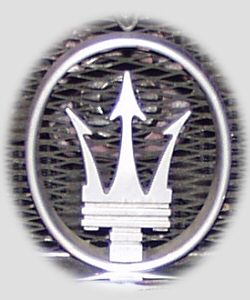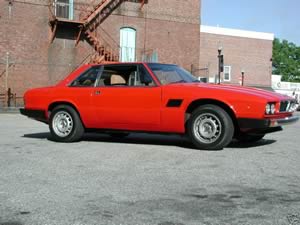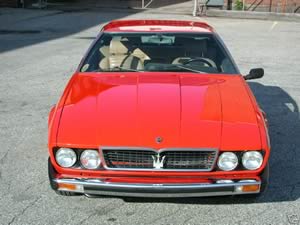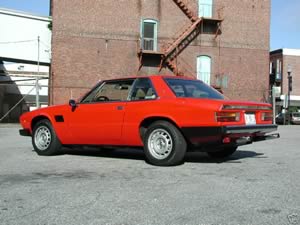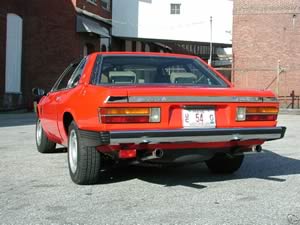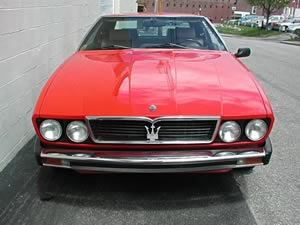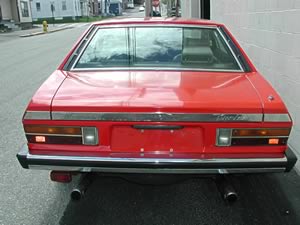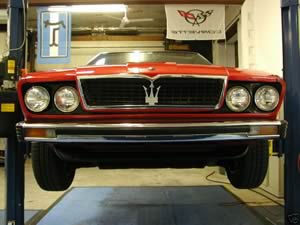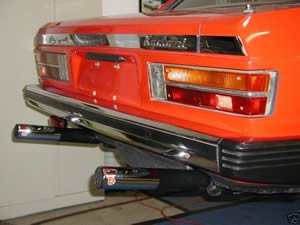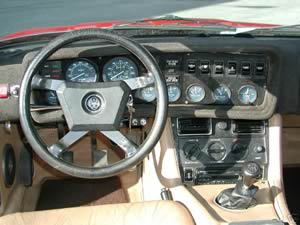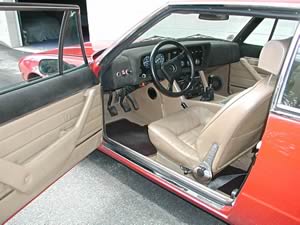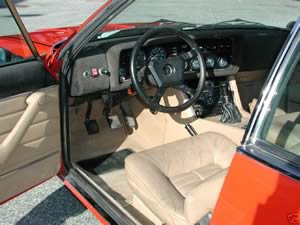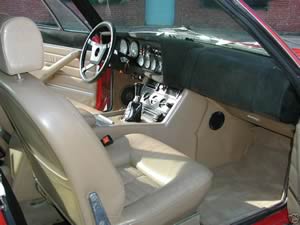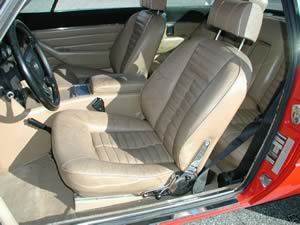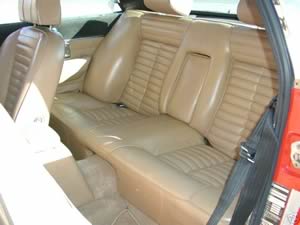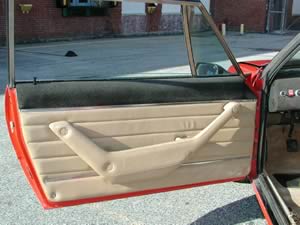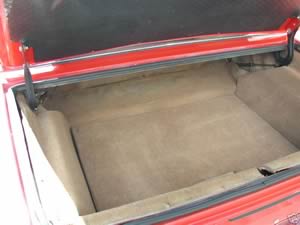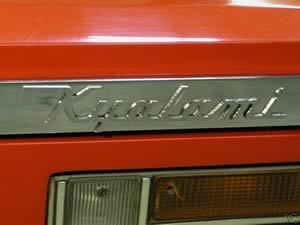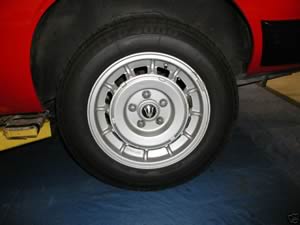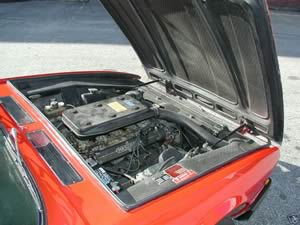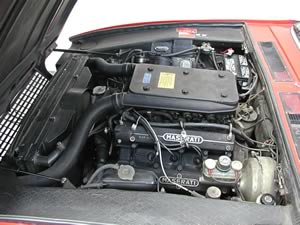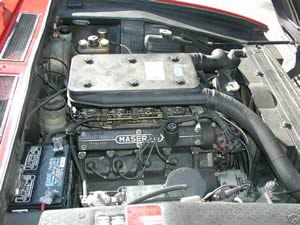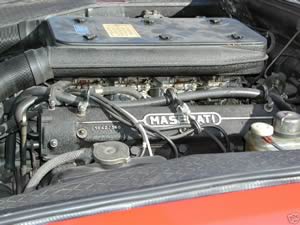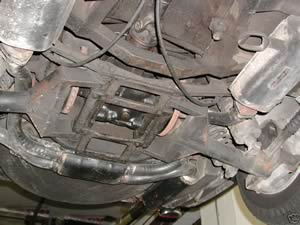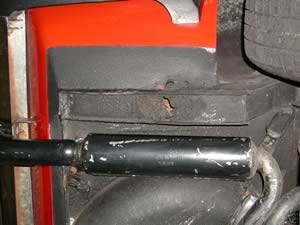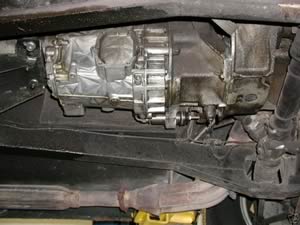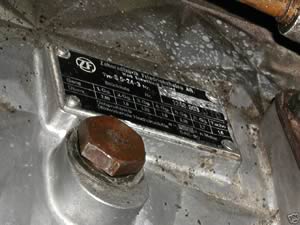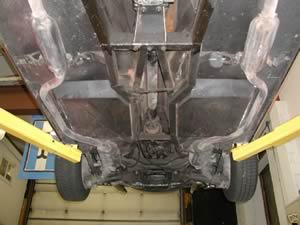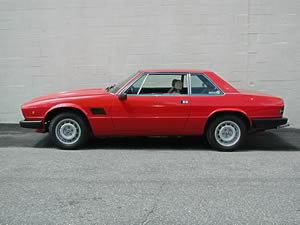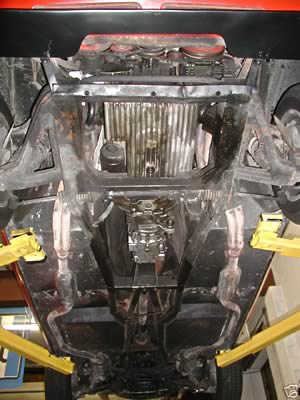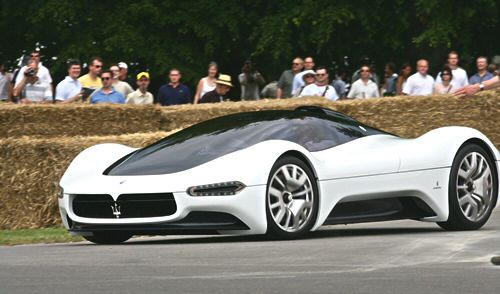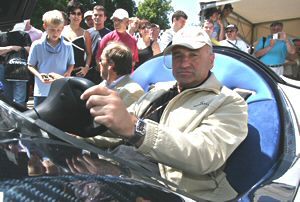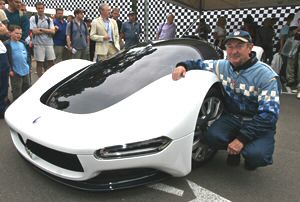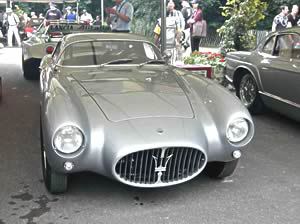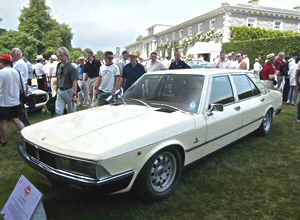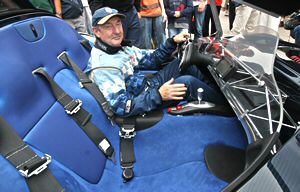| |
 |
| |
| |
|
The Maseratis at the Goodwood Festival of Speed |
| |
THE BEST IN THE WORLD
A Celebration of the Luxury Four Seater Touring Car
1968 Maserati Quattroporte
Entered by Mr Edwin Faulkner |
| |
©Roger Harrison
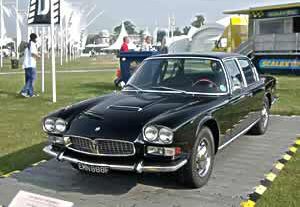
Quattroporte I - 2a serie |
 |
©Roger Harrison
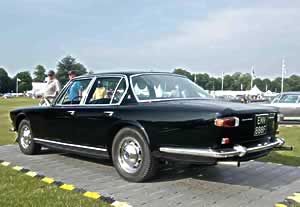
Quattroporte I - 2a serie |
| |
The Maserati Quattroporte represented the ultimate in speed and luxury in the saloon class. It was really the first four-door supercar The shape was the work of Pietro Frua and looked assertive and dignified if not quite beautiful. There was beauty to be found under the bonnet, however, in the form of Maserati's four-cam 4.2-litre or 4.7-litre V8 engines, which were renowned for great smoothness and torque. In manual form the Quattroporte (four-door in Italian) could touch 140mph with the ZF 5 speed manual transmission, which made it the world's fastest saloon car at the time. In total 679 Quattroportes were built. |
|
|
|
1971 Citroën SM
Entered by Mr Simon Scotland |
| |
©Roger Harrison
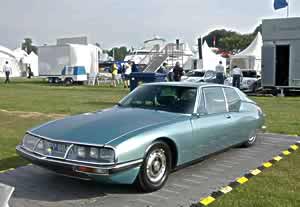
Citroën SM |
| |
First fruit of the marriage between Maserati and Citroën was the big Citroën SM of 1970, a prestige GT car. Power came from a smaller V6 version of Maserati's long-lived quad-cam V8, which at 2.7-litres, came in just under the punitive French tax laws. The 170 bhp delivered through the front wheels was handled by Citroën's now well tried hydropneumatic self-levelling suspension, interconnected with the four wheel disc brakes and very high-geared power steering. Fast and refined with excellent handling the SM was a consummate long distance GT. Reliability problems and the onset of the oil crisis shortlt after its launch accelerated the car's demise, and in 1975 production halted after 13, 290 units were made. Only 237 cars were sold in the UK. |
| |
|
|
|
|
THE CARTIER STYLE ET LUXE
Class 7: Individual Beyond Price - The Super-Rare Four-Door Luxury Saloon, 1970-1980
1974 Maserati Quattroporte II
Entered by Mr Manfred Lang |
| |
©Roger Harrison
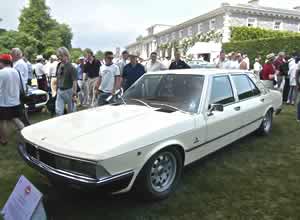
The very rare Quattroporte II |
| |
Attempting to recreate the success of the original 1963 four dour Maserati, this Quattroporte was conceived using the front drive V6 power train of the Citroén SM. It was luxuriously appointed and its discreet styling - by Marcello Gandini of Bertone - appealed to the quietly wealthy. Alas, the bankruptcy of Maserati and subsequent take-over by DeTomaso sealed its fate after only seven were built, mostly for export to the Middle East. This Quattroporte II is one of the prototypes being equipped with a digital instrument panel, a special interior and magnesium rims.
This car was the last of probably seven SM Opéras built by Chapron. It was displayed at the Salon de Barcelone in 1974 and sold at the beginning of 1975 in Spain. The current owner re-imported it back to France, and has lightly restored it mechanically. |
|
|
|
1971 Citroën SM Opéra by Henri Chapron
Entered by Mr Pierre Verpreaux |
| |
©Roger Harrison
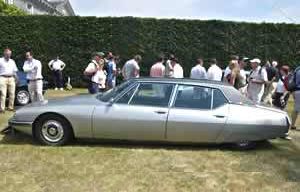
Citroën SM Opéra |
 |
©Roger Harrison
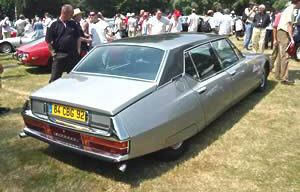
Citroën SM Opéra |
| |
The Maserati powered Citroën SM was France's only true prestige car in the early seventies and it was only natural that Henri Chapron, creator of some of the most elegant DS-based specials, should use it as a basis for a glamorous four door saloon, the Op&eacuet'ra. Built only to special order these vastly expensive cars were perhaps the world's most exclusive saloons. The Elysee Palace still has a special extra long wheelbase persidential drop head version for use on state occasions.
This car was the last of probably seven SM Opéras built by Chapron. It was displayed at the Salon de Barcelone in 1974 and sold at the beginning of 1975 in Spain. The current owner re-imported it back to France, and has lightly restored it mechanically. |
|
|
|
|
Class 3: Etceterini - The Coachbuilt Bambino Sports Cars, 1945-1955
1954 OSCA Mt4
Entered by Mr Henri Fyshe |
| |
©Roger Harrison
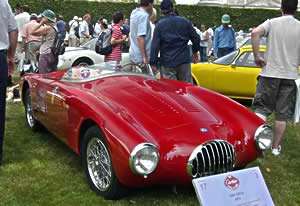
The OSCA Tipo 4tM |
| |
OSCA - Officini Specializzata Costruzione Automobili - was the company formed by the Maserati brothers in 1947, nine years after selling out their original firm to Adolfo Orsi. The Mt4 was one of the first models they produced. This car was built in 1954 and was fitted with an 1100cc 4-cylinder engine, producing 92 bhp. Entered as the 'works' car in the 1954 Le Mans 24 Hours (driven by Jaques Peron and Francesco Giardini) it was lying 7th overall and 1st in class after 23 hours when it left the track during a severe downpour. It competed in the Mille Miglia in 1954, 1956 and 1957, winning its class in 1956, driven by Attilio Brandi. In 1954 out of 15 races the car finished 1st overall on four accasions. In 1955 the car placed 4th overall in the Gran Premio di Pergusa.
Apart from its class win in the Mille Miglia in 1956 the car also finished 2nd in class in the Giro di Sicilia. Between 1957 and 1962 the OSCA was entered in similar events but without much more success. The car has been owned by the Fyshe family since 1997. |
|
|
|
|
1958 OSCA FS372
Entered by Mr Christophe Pund |
| |
©Roger Harrison
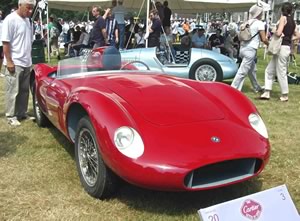
The OSCA Tipo FS372 |
| |
OSCA - Officini Specializzata Costruzione Automobili - was the company formed by the Maserati brothers in 1947, nine years after selling out their original firm to Adolfo Orsi. They produced a series of twin overhead cam engined sports cars of up to 1600cc which acquitted themselves well in racing. One of just nine 372 models produced, this one was sold new in 1958 to Jon Gustav Fast in Sweden who raced it with impressive results including a 2nd overall at Chimay (Belgium) in 19588 in front of three Maseratis and a 3rd in the Nürburgring the same year.
Today only six 372 models are known to exist and only 2 with this genuine body by Morrelli at Ferrara. |
|
|
|
|
Class 5: Perfect Skin - Elegant Endurance Aerodynes, 1945-1960
1953 Maserati A6GCS Berlinetta by Pinin Farina |
| |
©Roger Harrison
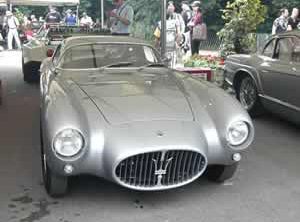
Maserati A6GCS Berlinetta |
 |
©Roger Harrison
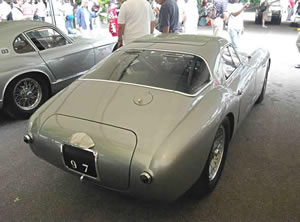
Maserati A6GCS Berlinetta |
| |
There are some exotic cars that as soon as you see them you'd give almost anything to own. One such car is the A6GCS Berlinetta designed by Pinin Farina of which alas only four were made during 1954. The concept of a coupe built on the A6GCS chassis was promoted by Guglielmo Dei, Maserati agent for Rome and sponsor of Scuderia Centro-Sud. The first of these, chassis #2056 was ordered in December 1953 by a Count Paolo Gravina of Catania who immediately entered it for the 'Giro di Sicilia'. The Count's car crashed into a wall, tragically killing his co-driver. The second car, chassis #2057, was presented at 1954 Turin Motor Show - its first owner, Roman Pietro Palmieri, entered the car for the Giro di Umbria. The third car, chassis #2059, was completed in September 1954 and was first owned by Florentine Count Alberto Magi Diligenti who entered it for the 1955 Mille Miglia. The last car, chassis #2060, was the car displayed at the Festival of Speed. |
|
|
|
|
A Class Of Its Own, 1954-1958
The Maserati Tipo 250F |
| |
©Roger Harrison
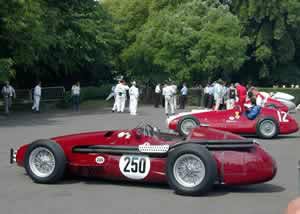
Maserati Tipo 250F |
 |
©Roger Harrison
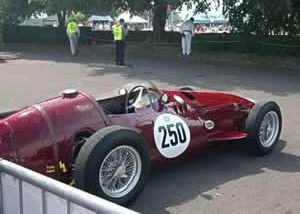
Maserati Tipo 250F |
| |
In spite of having the most successful Grand Prix car of 1957 with four victories in the Argentine, Monaco, French and German Grand Prix, Maserati officially withdrew from motor racing in 1958. Signor Orsi, head of Maserati, blamed high costs and the introduction of the 3-litre limit for sports/racing cars which rendered their 4.5-litre V8 obsolete overnight. The 250F is unusual in that following the introduction of the new 2.5-litre formula it not only participated in the opening race of the new formula in 1954 but made its final appearance driven by privateer Bob Drake, in the final race for that formula at the United States GP of 1960. From its introduction in 1954 to its World Championship winning year in 1957 and on to that final race it remained the same basic design and can claim to have been victorious on its debut at the 1954 Argentine GP with Fangio at the wheel.
Maserati had always built cars not only for their factory team but also for its privateer customers and between 1954 and 1958 some 34 cars were built. Developed from the A6GCM 2-litre 6-cyl engine, the 2.5-litre engine of the 250F was largely the work of Gioacchino Colombo and Vittorio Bellentani, who put in a great deal of work on the cylinder heads raising power output to some 240 bhp @ 7400 rpm.
In 1954 Colombo left Maserati to join Bugatti and development was placed in the hands of Giulio Alfieri who brought the model to a higher pitch of efficiency. The chassis, drastically lightened by using a small diameter welded multi-tubed steel was designed by Valerio Colotti. Front suspension was independent by means of unequal length double wishbones with coil springs. Rear suspension was de Dion type with a transverse leaf spring mounted in front of the rear axle with Houdaille double-acting shock absorbers. Power from the V6 engine was transmitted through a multi-plate clutch on the rear of crankshaft and then by an open propellor shaft to the rear axle/gearbox assembly. Braking was by finned drum brakes all-round. A four-speed rear mounted gearbox was later replaced with a five-speed box.
Over the years, the 250F had evolved into the Championship winning 'light-weight' car of 1957, the model most endeared by its drivers: its chassis had been lightened and lowered by the use of smaller diameter and thinner gauge tubing, braking was continually improved by the use of larger and wider drums together with the addition of extra cooling fins and the bodywork redesigned with the multi louvred panels replaced with smoother and sleeker panels containing fewer vents. The twin overhead camshaft 2,493 cc V6 engine was now developing 270 bhp @ 8000 rpm.
At the 1957 German Grand Prix at Nürburgring Fangio in a 250F wrote one of the great chapters in Maserati motor racing history. Expecting excessive tyre wear, Maserati started the race with their cars on half empty fuel tanks deciding to push them right from the start with a view to changing tyres during the fuel stop. By lap 12 Fangio had built himself a lead of some 30 seconds when he pulled into the pits for fuel and fresh tyres. A disastrously slow stop meant that by the time he left the pits not only had he lost the lead but he now trailed the leaders, Mike Hawthorn and Peter Collins in the two Ferraris, by some fifty seconds. With a heavy fuel load and new tyres Fangio failed to make any impression on the leaders during the next three laps of the 14-mile circuit. The Ferrari pit thinking Fangio was in trouble signalled their drivers to ease up whilst from the Maserati pit came instructions to press hard. After a series of record breaking laps, which produced the first 90 mph lap at the Nürburgring, Fangio had reduced the lead to 33 seconds by the end of lap 16, three laps later the lead was down to 14 seconds and by the end of lap 20 he was only a couple of second behind the leaders by which time I understand new orders were issued to the Ferrari drivers. On the following lap he passed both the Ferraris and went on to win the race by 3.6 seconds.
Notable privateers who drove the 250F include Sergio Mantovani, Roberto Mieres, Prince Bira, Roy Salvadori, Horace Gould, Bruce Halford, Carlos Menditgeguy, Harry Schell, Francesco Godia-Sales, Onofre Marimon and the only female driver of a 250F Maria-Teresa de Filippis. |
|
|
|
|
This Maserati was spotted on a trade stand
1993 Maserati Biturbo Spyder by Zagato |
| |
©Roger Harrison
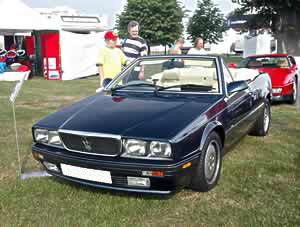
A 1993 Biturbo Spyder with only 5,468 miles on the clock for GB £23,995! |
| |


